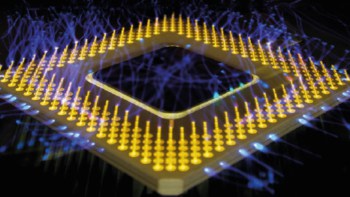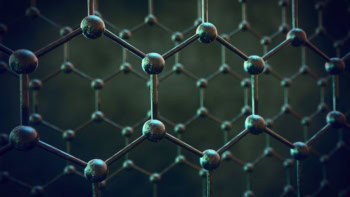
The substrates on which semiconductor chip are grown usually get ignored, but they may be more important than we think. This is the finding of researchers in the US and Germany, who used high-energy X-rays to study titanium dioxide – a common substrate for insulator-to-metal semiconductors. The discovery that this material is far more than just a passive platform could help scientists develop next-generation electronics.
Materials that switch from metal-like to insulating very quickly offer a promising route for developing super-fast electronic transistors. To this end, a team led by materials scientist and physicist Venkatraman Gopalan of Pennsylvania State University, US, began studying a leading candidate for such devices, vanadium dioxide (VO2). Vanadium dioxide is unusual in that its electrons are strongly correlated. This means that, unlike in silicon-based electronics, the repulsion between electrons cannot be ignored.
Crucially, though, the researchers did not look at the VO2 layer on its own. They also analysed how it interacts with the titanium dioxide (TiO2) substrate upon which it is grown. To their surprise, they found that the substrate contains an active layer that behaves just like the semiconductor when the VO2 switches between an insulating state and a metallic one.
Timed X-ray pulse
Gopalan and colleagues obtained their results by growing a very thin film of VO2 atop a thick TiO2 single crystal substrate. They then fabricated a device channel on the ensemble across which they could apply the voltage pulses that switch the semiconductor from insulating to conducting. During this switching, they applied high-energy X-ray pulses from the Advanced Photon Source (APS) at Argonne National Laboratory to the channel and observed the lattice planes of the semiconducting film and the substrate.
“The X-ray pulse was timed so that it could arrive before, at and after the electrical pulse so that we see what happens with time,” Gopalan explains. “It was also raster scanned across the channel to map what happens to the entire channel when the material switches from being an insulator to a metal.”
This technique, known as spatio-temporal X-ray diffraction microscopy, is good at revealing the behaviour of materials at the atomic level. In this case, it showed the researchers that the VO2 film bulges as it changes to a metal. This was unexpected: according to Gopalan, the material was supposed to shrink. “What is more, the substrate, which is usually thought to be electrically and mechanically passive, also bulges along with the VO2 film,” he says. “It is like the tail wagging the dog, and shows that a mechanism that was missed before is at play.”
Native oxygen vacancies are responsible
According to the researchers’ theoretical calculations and modelling, this mechanism involves atomic sites in the material lattice that are missing oxygen atoms. These native oxygen vacancies, as they are known, are present in both the semiconductor and substrate and they ionize and deionize in concert with the applied electric field.
“Neutral oxygen vacancies hold a charge of two electrons, which they can release when the material switches from an insulator to a metal,” Gopalan explains. “The oxygen vacancy left behind is now charged and swells up, leading to the observed swelling in the device. This can also happen in the substrate.”
The experiment itself was very challenging, Gopalan says. One of the X-ray beamlines at the APS had to be specially rigged and it took the team several years to complete the set-up. Then, he adds, “The results were so intriguing and unexpected that it took us several more years to analyse the data and come up with a theory to understand the results.”

Colourful nanotubes become flame-resistant
According to Gopalan, there is tremendous interest in next-generation electronics based on correlated electronic materials such as VO2 that exhibit a fast insulator-to-metal transition. “While previous studies have analysed this material using various techniques, including using X-rays, our is the first to study a functioning device geometry under realistic conditions, while mapping its response in space and time,” he tells Physics World. “This study is unique in that respect, and it paid off in what it revealed.”
The researchers are now trying to understand the mechanisms behind the substrate’s surprising response, and they plan to revisit their experiment to this end. “We are thinking, for example, of intentionally adding ionizing defects that release electrons and trigger a metal-to-insulator transition when a voltage is applied,” Gopalan reveals.
The present study – which also involved collaborators at Cornell University and Georgia Tech in the US, and the Paul Drude Institute in Germany – is detailed in Advanced Materials.


